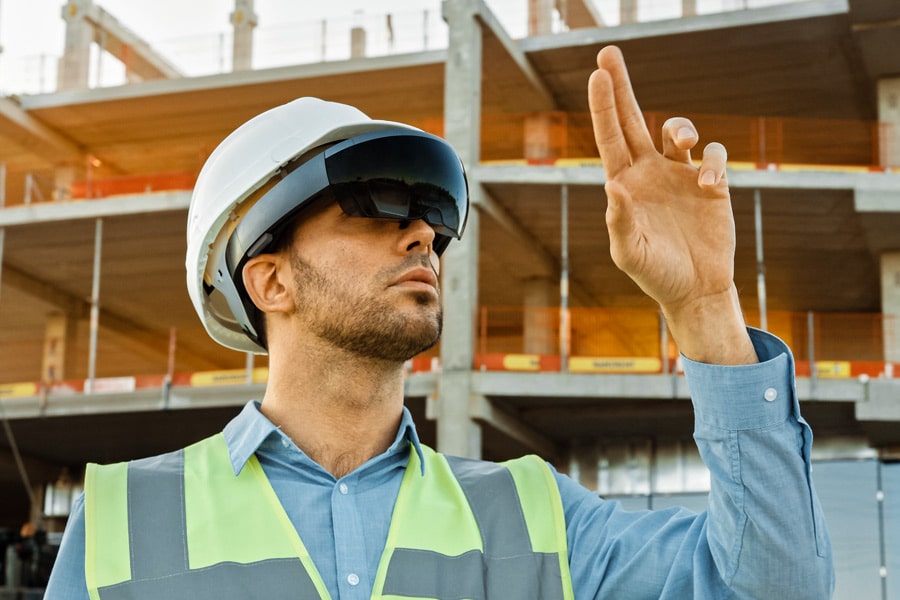The construction industry is highly innovative, regularly creating and delivering buildings and infrastructure schemes for clients and society that push the envelope in terms of design, technical acumen and logistical accomplishment.
However, cutting-edge though it can be, when it comes to embracing new technologies—specifically digital technology—construction is behind pretty much every other sector.
According to U.S. consultant McKinsey, globally construction only ranks above agriculture and hunting in a league table of digital tech use.
It is an understatement to suggest this is an unsatisfactory state of affairs. But there has been progress, with the industry realising digital technology’s potential to ensure consistency and quality of build, and a chance to increase efficiencies and reduce costs.
Much of the industry has begun to embrace building information modeling (BIM), which offers designers, engineers and contractors the opportunity to see information about a particular building project easily and effectively.
Augmented reality in construction – a Harvard initiative
Alongside BIM, other technologies have begun to make headway. One of these is augmented reality (AR).
Initially developed in 1968 by Harvard academic and computer scientist Ivan Sutherland, AR enables a view of the world—and in the case of construction, the site of a planned development or ongoing project—that includes a virtual image overlaid onto it.
In the case of construction, it enables stakeholders to visit—and revisit—a project and see what works and what doesn’t via 3D imagery that can be superimposed on existing assets.
For example, planned activity in a building shell such as the location of pipework, windows and doors can be viewed through a special headset onsite, well before specialist contractors have turned up to do the job.
With the right software and connections, those involved in a project can use AR to collaborate throughout its development, checking plans and alterations as they are made.
AR has also been used by some developers to help house buyers design their own homes, offering clients the opportunity to view a project and rearrange fixtures and fittings around an apartment, such as changing where power points go. These alterations would be fed back into the supply chain.
Pros and cons of augmented reality for construction projects
Along with the potential to save money on a construction project, this interactive element is one of AR’s key benefits.
Other positives include:
- Better planning: AR can help team members on a project monitor progress and communicate more efficiently.
- Better safety: AR can help create a safer working environment, with locations of equipment, supplies and other workers being highlighted. Headsets can also let an operator know if materials have been installed correctly.
- Project management: Real-time visualisations through AR mean designers and architects do not need to rely on manually recorded measurements or drawings.
- Greater accuracy: AR can offer designers, contractors and clients an ongoing “walkthrough” of a development, reducing potential for risk and design faults.
- Save time and money: It’s easier and more cost-effective to resolve any design issues before building work has begun, thereby avoiding delays.
There are some potential disadvantages of AR that are worth noting.
- Security: There are some people who cite concerns around privacy and intrusiveness.
- Lack of IT resources: Technology like AR costs money, and many firms don’t have or are unwilling to spend it on this activity.
- Training and experience issues: Relatively few people in the construction sector have the necessary skills to use AR effectively, although this is said to be improving.
A developing technology
AR, like any other technology, won’t stand still. And the demands of the construction industry will play its part in increasing the effectiveness of what AR can achieve.
Consider the hardware. Currently, most AR applications are viewed through large headsets.
While these are suitably immersive, they can be cumbersome. Technology experts predict that AR headsets will inevitably get smaller, becoming “wearable” and less unwieldly.
It is also becoming clear that industrial uses for what some call “extended reality” technology—which includes AR and virtual reality—will soon outpace those for consumer solutions.
Using augmented reality for construction projects, architects are able to see the buildings they are designing “in situ,” before a brick has been laid or a timber joist erected. This helps improve communications between the architect and the client.
Within engineering, AR is used in design, manufacture and assembly, as well as maintenance, training and quality control. For example, aircraft manufacturing giant Boeing uses AR to help create complex wiring systems for its 787 Dreamliner passenger jet. Similarly, parts for the construction sector can be visualised using AR before being made and delivered on site.
As well as helping architects, engineers and contractors to deliver projects more effectively, many believe AR will be used increasingly in on-the-job training, experiential coaching and knowledge transfer and collaboration.
How Bluebeam can help
Augmented reality in construction is all about allowing plans and schemes to be seen more easily. Bluebeam Revu can facilitate such efforts efficiently and effectively.
Getting timely design feedback from project stakeholders is critical to avoid costly changes during construction, whether that’s for architects, engineers, construction workers or contractors.
Collaboration software like Revu speeds up design reviews by allowing project partners to mark up and collaborate on the same documents in real time, any time.
The PDF-based markup and measurement tools in Bluebeam Revu help engineers maintain data integrity from project start to finish.












